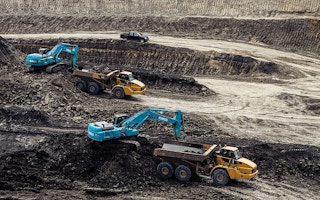More people in Asia will die due to air pollution if plans to build new coal power stations go ahead, a study by Greenpeace and Harvard University has cautioned.
To continue reading, subscribe to Eco‑Business.
There's something for everyone. We offer a range of subscription plans.
- Access our stories and receive our Insights Weekly newsletter with the free EB Member plan.
- Unlock unlimited access to our content and archive with EB Circle.
- Publish your content with EB Premium.
An estimated 20,000 people die every year from respiratory illnesses linked to coal power in Southeast Asia, South Korea, Japan and Taiwan.
That death toll will grow to 70,000 annually by 2030 if new coal plants that are currently being built or in the planning stage go ahead in these territories, said researchers.
The research was based on a study by Harvard University Atmospheric Sciences modeling group, Harvard School of Public Health and Greenpeace on how much air pollution levels are a result of coal emissions in different locations across Asia, and how those emissions impact human health.
It found that Southeast Asian countries will suffer the most premature deaths as a result of coal burning, with Indonesia top of the list, followed by Vietnam and Myanmar.
Burnt coal releases sulphur dioxide and nitrogen oxide, which form fine particulate matter that is the most harmful air pollutant. These compounds are also powerful greenhouses gases that contribute to climate change.
Fast-growing Southeast Asian economies, which are expected to demand 83 percent more power by 2035 than they do now, and the mature economies of Japan and South Korea, have coal plants in the pipeline that will triple carbon emissions by 2030 to a level that exceeds emissions from the United States and Europe combined, the study predicted.
Lauri Myllyvirta, senior global coal campaigner at Greenpeace East Asia, noted that Southeast Asian coal expansion is a particular worry because of very weak emissions standards for power plants.
“All countries in the region [Southeast Asia] allow many times more pollution from new coal-fired power plants than China and India,” he said.
Japan and South Korea are the only developed economies to be aggressively pursuing the expansion of their coal industries, the report noted. This is a strategy that is at odds with the East Asian countries’ commitments to the Paris climate treaty to curb greenhouse gas emissions.
Japan, the world’s fifth biggest carbon emitter, was a late ratifier of the Paris Agreement, signing the treaty four days after it came into force.
Korea, one of the fastest growing emitters in the Organization for Economic Co-operation and Development (OECD) club of wealthy countries and the world’s ninth biggest polluter, signed the Paris Agreement just a day before it came into force.
Indonesia and Vietnam, which contribute 1.5 per cent and 0.7 per cent of the world’s emissions respectively, have also signed and ratified the Paris treaty.
“It’s hard to reconcile coal plants with the climate change commitments,” Myllyvirta told Eco-Business.
Southeast Asian countries have the opportunity to leapfrog coal and adopt renewable energy, said Myllyvirta, which would reduce the projected health impacts of coal by more than one fourth.
But obstacles to the adoption of renewable energy options, and ongoing backing for coal power mean that a dramatic change in the energy mix in many Asian countries seems unlikely.
“Unfortunately, Japan and Korea are actively promoting coal, as these countries have powerful domestic corporations that sell coal-fired power plants,” commented Myllyvirta.
In Southeast Asia, he noted, while public support for renewables is fairly high, clean energy tends to be regarded as a minor solution that can be used in remote villages and a “nice addition” to the power mix.
“For example, in Indonesia there is a target is to add 35 gigawatts of new power generation by 2020. But there is the sense that there is no way renewable energy can deliver this at scale,” Myllyvirta noted.
However, he pointed out that China installed 32 gigawatts of solar power this year. “When you get to the first gigawatt [or energy generated from renewables], things start to happen quite fast,” he said.
A major problem in Indonesia, however, is collusion between the coal industry, the grid operator, the state-owned power company and the government, Myllyvirta suggested. “It has been very hard to get state power companies to issue contracts for renewable energy.”

















